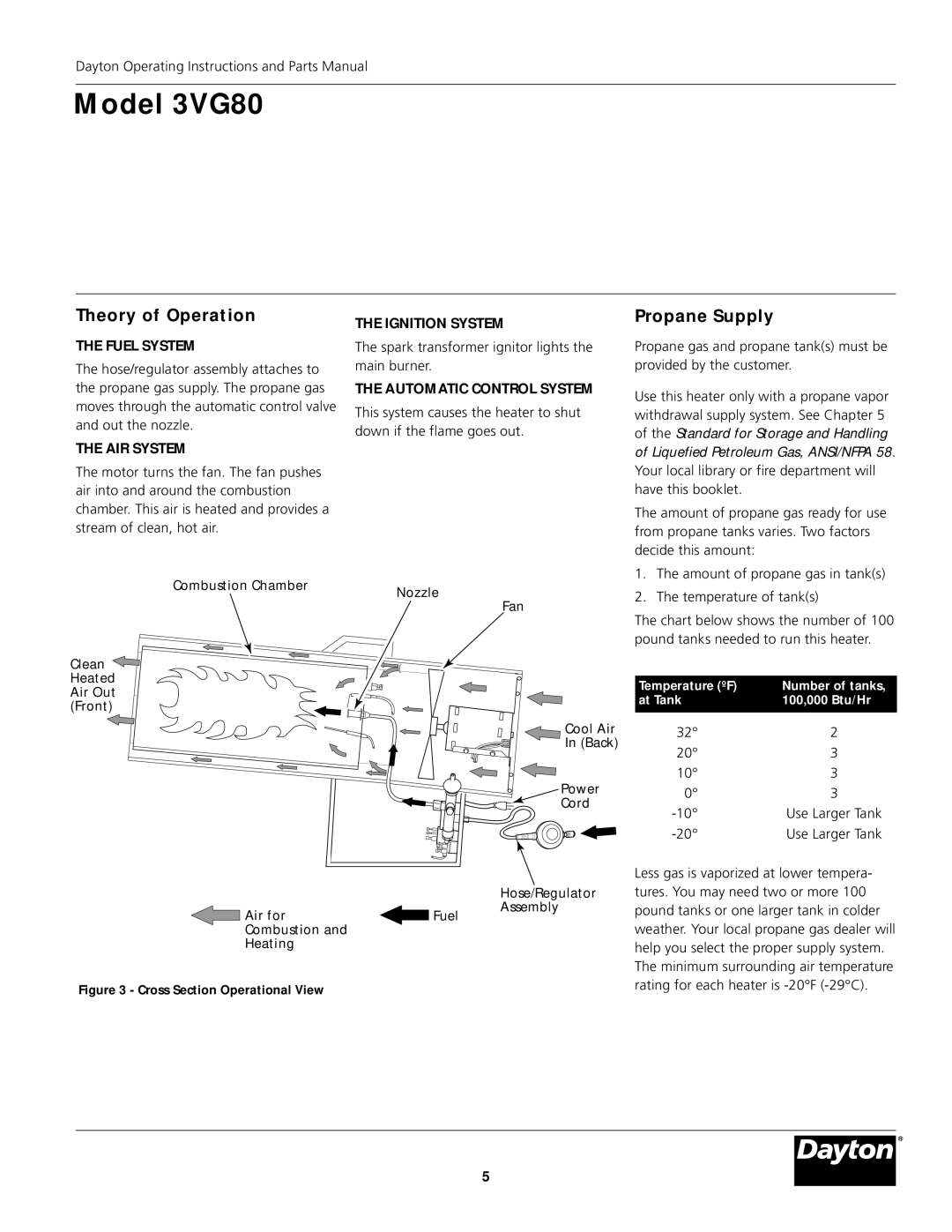
Dayton Operating Instructions and Parts Manual
Model 3VG80
Theory of Operation
THE FUEL SYSTEM
The hose/regulator assembly attaches to the propane gas supply. The propane gas moves through the automatic control valve and out the nozzle.
THE AIR SYSTEM
The motor turns the fan. The fan pushes air into and around the combustion chamber. This air is heated and provides a stream of clean, hot air.
THE IGNITION SYSTEM
The spark transformer ignitor lights the main burner.
THE AUTOMATIC CONTROL SYSTEM
This system causes the heater to shut down if the flame goes out.
Propane Supply
Propane gas and propane tank(s) must be provided by the customer.
Use this heater only with a propane vapor withdrawal supply system. See Chapter 5 of the Standard for Storage and Handling of Liquefied Petroleum Gas, ANSI/NFPA 58. Your local library or fire department will have this booklet.
The amount of propane gas ready for use from propane tanks varies. Two factors decide this amount:
Combustion Chamber | Nozzle |
| |
| Fan |
Clean |
|
Heated |
|
Air Out |
|
(Front) |
|
Cool Air
In (Back)
Power
Cord
|
| Hose/Regulator |
Air For Combustion | Fuel | Assembly |
Air for | Fuel |
|
CombustionAnd Heatingand
Heating
Figure 3 - Cross Section Operational View
1.The amount of propane gas in tank(s)
2.The temperature of tank(s)
The chart below shows the number of 100 pound tanks needed to run this heater.
Temperature (ºF) | Number of tanks, |
at Tank | 100,000 Btu/Hr |
32° | 2 |
20° | 3 |
10° | 3 |
0° | 3 |
Use Larger Tank | |
Use Larger Tank |
Less gas is vaporized at lower tempera- tures. You may need two or more 100 pound tanks or one larger tank in colder weather. Your local propane gas dealer will help you select the proper supply system. The minimum surrounding air temperature rating for each heater is
®
5
Version B - For Reduction | G016.J |
